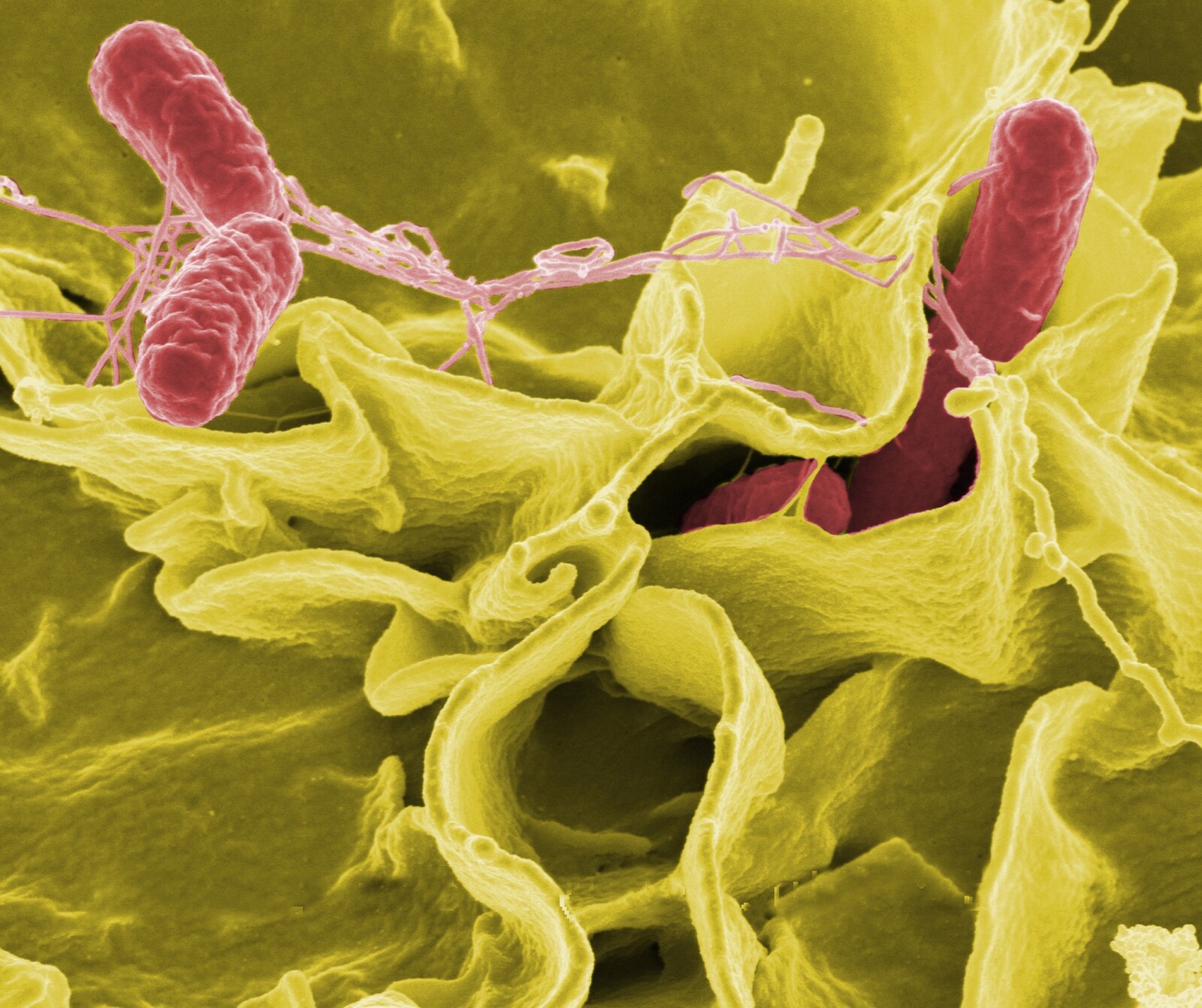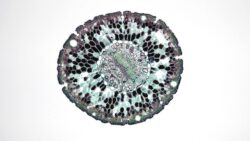Carcinogens
Ironically, many everyday substances are potential enemies in disguise. Carcinogens, cancer-causing agents, lurk in our environment, food, and lifestyle choices. This article seeks to unmask these hidden threats, delving into their nature, sources, and role in cancer development. In understanding these silent assailants, we empower ourselves to make informed decisions, adopt preventative measures, and contribute to the global fight against cancer. Let's decode the mystery of carcinogens together.

Key Takeaways
- Carcinogens are substances or exposures that cause cancer.
- People can be exposed to carcinogens through various sources such as the environment, certain foods, consumer products, and lifestyle factors.
- Carcinogens can change a cell's DNA or cause cells to divide at a faster rate, increasing the risk of cancer.
- Occupational exposure to known carcinogens in certain industries can significantly increase the risk of developing cancer.
Understanding the Nature of Carcinogens
While carcinogens are broadly defined as substances or exposures that cause cancer, understanding their nature involves a deeper exploration into how they interact with our cells, the varying degrees of exposure, and the influence of individual genetic makeup. The link between carcinogens and DNA damage is crucial, as the alteration of DNA sequences can lead to the uncontrolled cell growth that characterizes cancer. The intensity and duration of exposure, along with our unique genetic traits, can significantly influence this process. Furthermore, the importance of early detection in carcinogen-induced cancer cannot be overstated. By identifying these changes early, the development of cancer can be potentially halted, underscoring the need for regular screenings and proactive health management.
The Link Between Carcinogens and Cancer
In the realm of medical science, carcinogens are widely recognized for their potential to induce cancer, and understanding the connection between these harmful agents and the onset of malignancies entails a comprehensive examination of their biological impacts, the modes of exposure, and the individual genetic susceptibilities. The relationship between carcinogens and DNA damage is central to understanding how these substances cause cancer. Carcinogens have the capacity to modify the DNA sequence within cells, leading to mutations that can promote uncontrollable cell growth. This is primarily achieved through the mechanisms of carcinogen induced cell division, where an error in DNA replication occurs, fostering the development of cancerous cells. This knowledge underlines the importance of limiting exposure to known carcinogens to reduce cancer risk.
Types of Carcinogens: Chemical, Physical, and Biological
Carcinogens, categorized into chemical, physical, and biological types, differ in their origin and the mechanism through which they induce cancer. Chemical carcinogens, including substances like asbestos and tobacco, directly alter DNA, causing cells to multiply uncontrollably. Physical carcinogens, such as radiation, inflict DNA damage, disrupting cell division. Biological carcinogens, mainly viruses and bacteria, can indirectly promote cancer by causing long-term inflammation or by inserting their genetic material into human DNA. Understanding carcinogenic mechanisms is pivotal for prevention strategies and treatment regimens. Identifying emerging carcinogens, particularly with our constantly evolving environment and lifestyle, ensures that we stay one step ahead in the relentless battle against cancer.
Role of Genetic Factors in Carcinogen-Induced Cancer
Our genes play a crucial role in determining how our bodies respond to carcinogens, and they can significantly influence the development and progression of cancer. This concept, known as genetic susceptibility, refers to the fact that certain individuals may be more prone to carcinogen-induced cancer due to inherited gene variations. These genetic variations can alter the function of proteins involved in DNA repair, cell cycle control, and apoptosis, thereby affecting an individual's susceptibility to cancer. Carcinogen testing methods, such as genotoxicity testing and mutagenicity testing, are used to identify the degree of genetic damage caused by a suspected carcinogen. Understanding the role of genetic factors in carcinogen-induced cancer can guide personalized prevention strategies and therapeutic approaches.
Environmental Carcinogens: A Closer Look
Delving into the realm of environmental carcinogens, it becomes apparent that our surroundings play a crucial role in our exposure to these harmful substances. Environmental carcinogens, such as tobacco smoke, chemicals, radiation, and certain viruses, cause a range of health effects, including various types of cancer. Prolonged exposure can damage cells, leading to mutations and uncontrolled cell growth. Strategies for reducing exposure include maintaining healthy indoor air quality, careful choice of personal care products, mindful consumption of food and drink, and wearing protection when necessary. By understanding the risks associated with environmental carcinogens and taking proactive steps, individuals can significantly reduce their exposure and, consequently, their risk of developing cancer.
Occupational Carcinogens: Risks and Prevention
In the realm of occupational health and safety, understanding the risks posed by exposure to carcinogens at the workplace is vital for implementing effective prevention strategies. Identifying occupational carcinogens is the first step towards preventing occupational cancer. Industries like mining, manufacturing, and construction often expose workers to carcinogens such as asbestos, radon, and certain chemicals. It is essential to conduct regular hazard assessments in these workplaces to identify and control the exposure. Protective measures can include the use of personal protective equipment, proper ventilation, and regular health checks for workers. Additionally, policies should be in place to regulate the handling and disposal of carcinogenic materials. By adopting such strategies, we can significantly reduce the risk of occupational cancer.
Carcinogens in Food and Drinks
Numerous types of food and drinks contain carcinogens, and it is essential to understand their sources and potential health implications. The presence of carcinogens in processed foods is particularly concerning, as these are often a staple in many diets. These foods, which include meats and cheeses, can contain additives and preservatives classified as carcinogenic. The risk is further increased with certain cooking methods, such as grilling or frying, that can produce carcinogenic compounds. Similarly, carcinogens in alcoholic beverages are a significant concern. Regular and heavy consumption of alcohol can lead to an increased risk for several types of cancer, largely due to the production of acetaldehyde, a potent carcinogen, when the body metabolizes alcohol. It is crucial to be aware of these risks and consider dietary adjustments where possible.
Tobacco and Alcohol: Potent Carcinogens
Tobacco smoke and alcohol stand as two potent carcinogens, each carrying a significant risk for various types of cancer. The health risks associated with tobacco and alcohol are multifaceted, extending beyond the well-known lung cancer and liver disease. Carcinogen exposure from these substances has been linked to cancers of the mouth, throat, esophagus, pancreas, among others. The high prevalence of tobacco and alcohol use globally underscores the critical public health issue this poses. It's noteworthy that the risk escalates with the duration and intensity of use, stressing the importance of prevention and cessation efforts. Thus, understanding the carcinogenic nature of tobacco and alcohol is paramount in mitigating their health risks, and in promoting a healthier society.
The Impact of Lifestyle Choices on Carcinogen Exposure
While everyone is exposed to certain carcinogens in their daily lives, personal lifestyle choices can significantly increase or decrease this exposure. The impact of diet on carcinogen exposure is particularly notable as certain food items are known to contain carcinogenic compounds. Processed meats, for instance, are associated with increased cancer risk due to their nitrate content. On the other hand, a diet rich in fruits and vegetables can lower this risk. Similarly, exposure to environmental pollutants can also be modulated by lifestyle. Residing in highly industrialized areas or frequent use of private transportation can heighten the impact of pollution on carcinogen exposure. Hence, conscious efforts to adjust lifestyle habits can be a fundamental step towards minimizing carcinogen exposure.
Carcinogens in Consumer Products
In the realm of consumer products, various items, from personal care goods to household cleaners, may contain carcinogens that pose a potential risk to human health. One area of concern involves carcinogens in cosmetics, as certain makeup, skincare, and haircare products may harbor toxic elements. Ingredients such as formaldehyde, parabens, and certain fragrances, while enhancing the product's appeal, may carry carcinogenic properties. Similarly, carcinogens in household products are a significant issue. Cleaning solutions, air fresheners, and even certain furniture and carpets can emit harmful chemicals like benzene and formaldehyde. Consumers should be vigilant about their product choices, opting whenever possible for items labeled as carcinogen-free. This mindful approach can help reduce potential exposure to carcinogens in everyday items.
Medical Treatments and Carcinogen Exposure
Exploring the realm of medical treatments, it is essential to recognize that certain procedures and medications can inadvertently expose patients to carcinogens. These exposures can significantly contribute to medical treatments and cancer risk. For instance, chemotherapy and radiation treatments, while effective in combating cancer, can also increase the likelihood of secondary malignancies. Furthermore, healthcare professionals are at risk due to occupational exposure to carcinogens, including cytotoxic drugs and ionizing radiation. Therefore, comprehensive strategies for cancer prevention are imperative. These can include regular screenings, use of protective equipment, and implementation of safety procedures to reduce exposure. As the medical field advances, the challenge lies in developing treatments that are effective in disease management, while minimizing potential carcinogenic exposure.
Role of Carcinogens in Specific Cancer Types
Over 200 types of cancer have been identified, each with varying degrees of correlation to exposure to specific carcinogens. The role of occupational exposure in cancer development is significant. Industries like mining, manufacturing, and shipbuilding expose workers to carcinogens, increasing their risk of developing specific cancer types such as lung, mesothelioma, and bladder cancer. Furthermore, the impact of environmental factors on carcinogen-induced cancer is evident in cases of skin cancer caused by UV radiation and lung cancer due to air pollution. Both occupational and environmental exposures highlight the diverse ways in which carcinogens infiltrate our lives, underscoring the need for protective measures and regulations to mitigate these risks and reduce the incidence of cancer.
Reducing Carcinogenic Risk: Strategies and Measures
We must now turn our attention to strategies and measures that can be implemented to reduce our risk of exposure to carcinogens. A primary strategy for reducing carcinogenic risk is lifestyle modification. This includes adopting a healthy diet rich in fruits and vegetables, regular exercise, and avoiding tobacco and excessive alcohol consumption. Another strategy involves minimizing occupational and environmental exposure by using appropriate safety equipment and adhering to regulations. Regular screenings and vaccinations against cancer-causing infections are also effective measures against carcinogens. Importantly, public education about potential carcinogens in our environment, food, and products we use daily is crucial. Thus, through a combination of personal, occupational, and public health measures, we can significantly lower our carcinogenic risk.
Current Research on Carcinogens and Cancer Prevention
Fueled by advancements in technology and biomedical science, current research on carcinogens and cancer prevention is revealing innovative strategies to mitigate the impact of these cancer-causing agents on human health. Studies are focused on identifying new carcinogens, evaluating their mechanisms of action and developing prevention protocols. Current research on new carcinogens is expanding our understanding of their role in cell mutation and tumour development. Simultaneously, emerging trends in cancer prevention are directing attention towards early detection, lifestyle modifications and targeted therapies. These advancements, combined with a growing awareness of the environmental and genetic factors contributing to cancer, are opening up promising avenues in the fight against this pervasive disease. As we continue to unravel the complexities of carcinogens and cancer, a future with improved prevention and treatment possibilities appears increasingly attainable.
Policy and Regulations for Carcinogen Control
Regulatory policies and stringent controls are vital in managing carcinogen exposure, and they serve as a protective measure for public health. Governments worldwide have established carcinogen control regulations that include setting permissible exposure limits, enforcing safety measures, and promoting safer alternatives. These regulations play a pivotal role in reducing the incidence of carcinogen-induced diseases and thus, significantly impact public health. Rigorous implementation and compliance with these regulations can aid in reducing cancer rates, improving life expectancy, and enhancing the quality of life. However, the dynamic nature of carcinogens demands regular revisiting and updating of these regulations. Public awareness and involvement are also crucial to ensure the effectiveness of carcinogen control regulations.
Frequently Asked Questions
How Can Individuals Limit Their Exposure to Carcinogens in Their Daily Lives?
In terms of personal health strategies, individuals can significantly reduce potential risks through dietary changes and prudent selection of household products. A balanced diet rich in fruits, vegetables, lean proteins, and whole grains, while limiting processed foods, can contribute to overall health. Choosing household products, such as cleaning supplies and personal care items, that are free from harmful chemicals also reduces daily exposure to potentially harmful substances. These mindful choices can lead to a healthier lifestyle.
What Are the Common Symptoms of Cancer Caused by Carcinogens?
Cancer symptoms can vary widely but generally include persistent cough, unexplained weight loss, fatigue, skin changes, and difficulty swallowing. Understanding carcinogen identification can be pivotal in prevention. Dietary carcinogens, for instance, are often found in processed or overcooked foods, and reducing consumption can be a proactive step towards health. Remember, early detection is vital and regular medical check-ups are recommended, especially if you're at a higher risk due to extensive exposure to carcinogens.
Are Some People Genetically More Susceptible to the Effects of Carcinogens?
Yes, certain individuals could be genetically more susceptible to the effects of carcinogens. This is due to variations in genes that control carcinogen metabolism, which can affect how the body processes and eliminates these cancer-causing substances. Genetic testing can identify these genetic susceptibilities, thus providing valuable information for personalized prevention strategies. However, genetic predisposition does not guarantee the development of cancer as exposure levels and lifestyle factors also significantly influence risk.
What Is Being Done on a Policy Level to Reduce Carcinogen Exposure in the Workplace?
On a policy level, efforts are being made to address regulatory shortcomings and close policy loopholes to reduce harmful exposure in the workplace. This includes enhancing safety standards, implementing stricter regulations on the use of hazardous substances, and enforcing compliance with these standards. Efforts also focus on promoting safer alternatives, improving worker training on risks and protective measures, and strengthening the monitoring of workplace environments. These regulatory improvements aim to safeguard workers' health.
How Does Carcinogen Exposure Relate to Other Diseases Apart From Cancer?
Exposure to harmful substances can relate to various diseases apart from cancer. For instance, it can lead to respiratory, cardiovascular, and neurological disorders. Accurate carcinogen detection is crucial in disease prevention strategies, as it allows for timely intervention to reduce exposure. Such measures are vital in mitigating the risk of disease development and promoting overall health. Understanding the broad impacts of exposure to these substances is essential for comprehensive public health planning and response.
Conclusion
Ironically, while carcinogens stealthily pervade every facet of daily life, from the air breathed to the food consumed, their menace remains largely invisible. Continued research, policy regulations, and public health initiatives to tackle these hidden foes offer a beacon of hope. Comprehending the insidious nature of carcinogens and implementing preventive strategies is a crucial step towards reducing cancer's global burden, thus turning the tables on these silent assailants.

This post has been generated by AI and was not reviewed by editors. This is Not legal advice. Please consult with an attorney.




